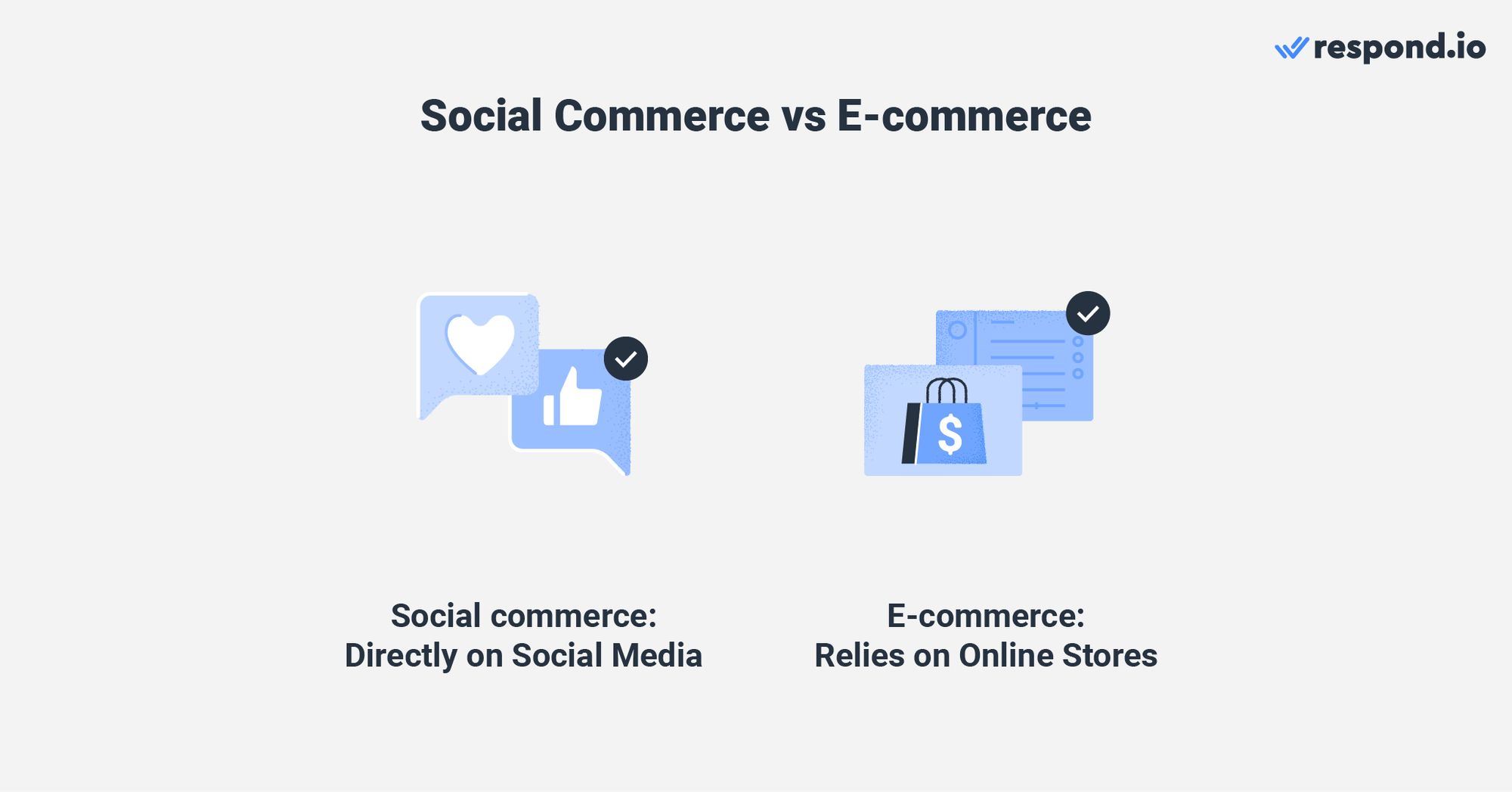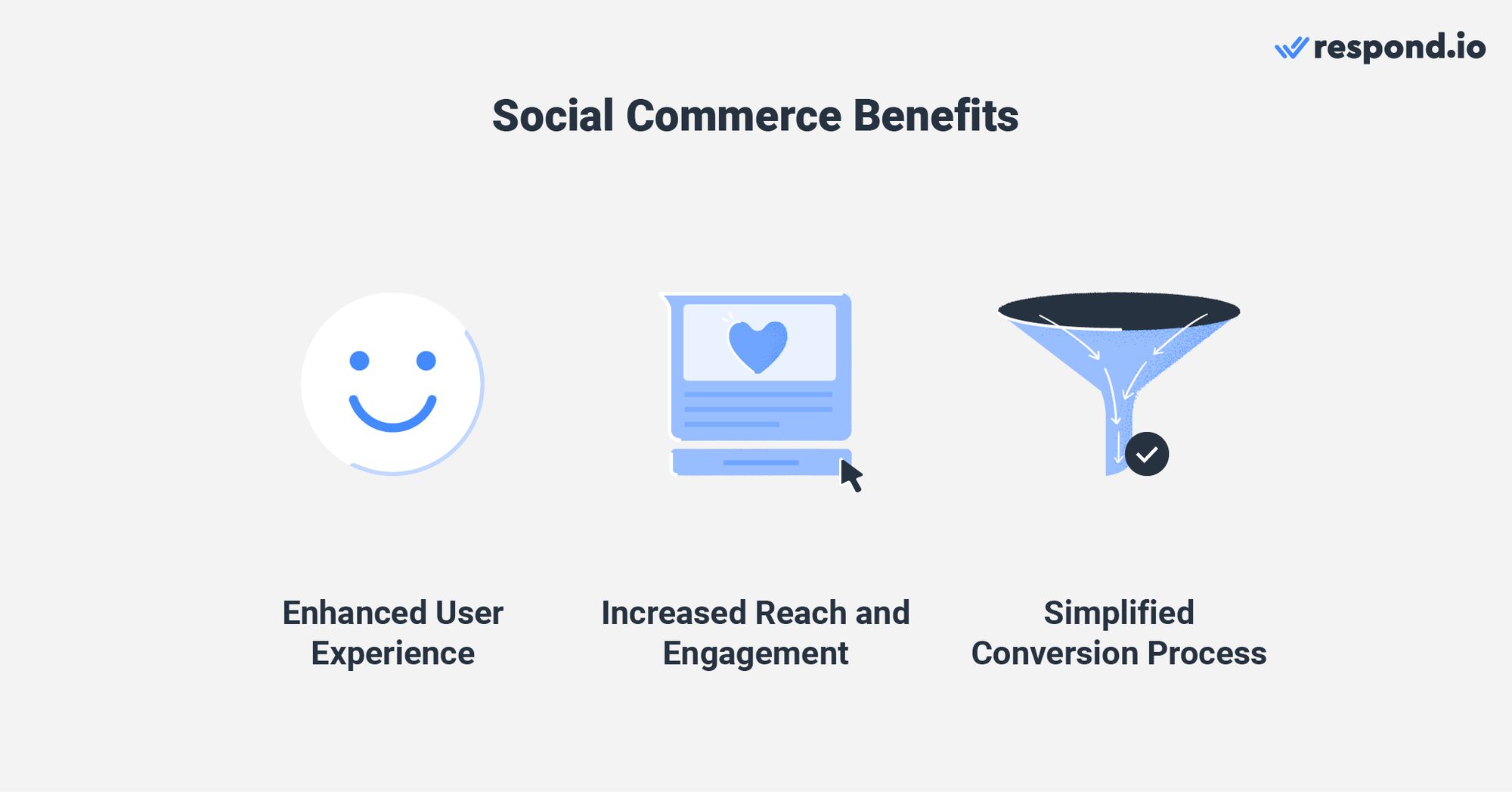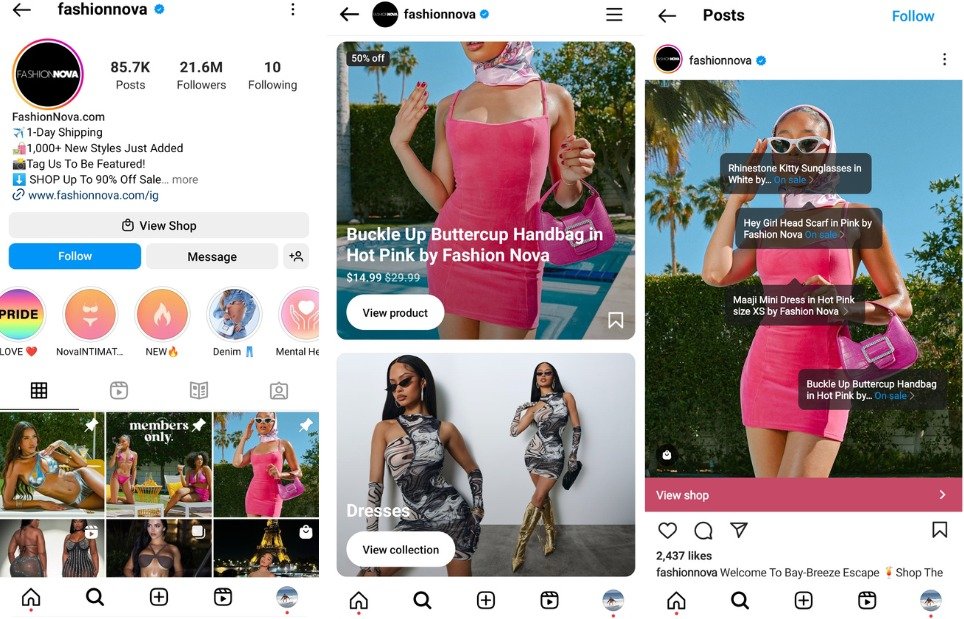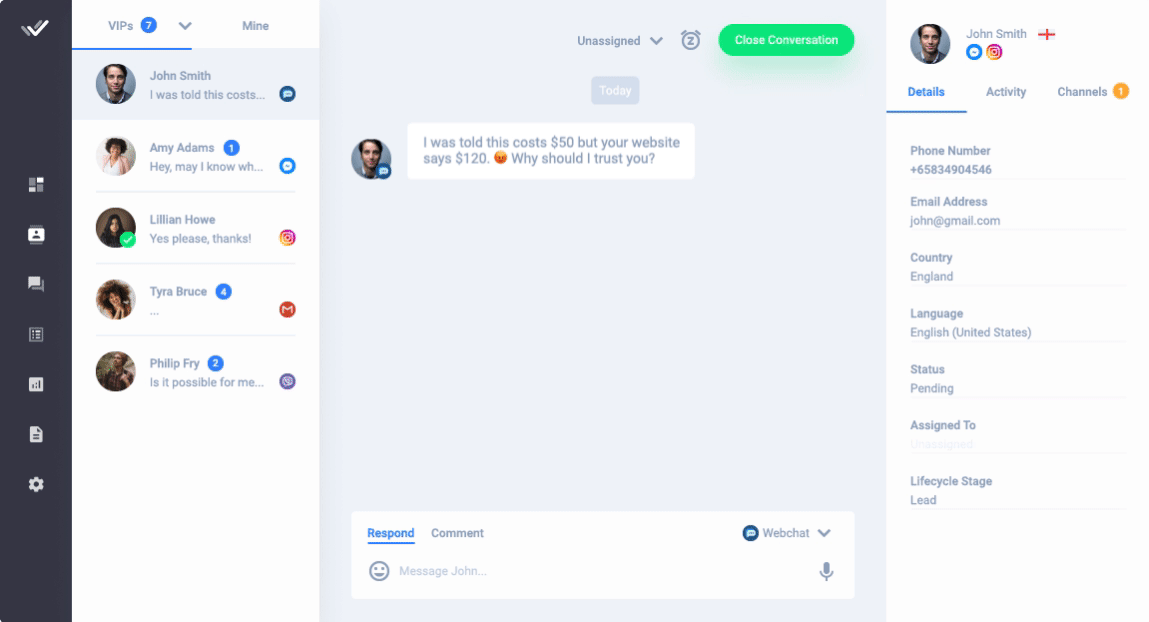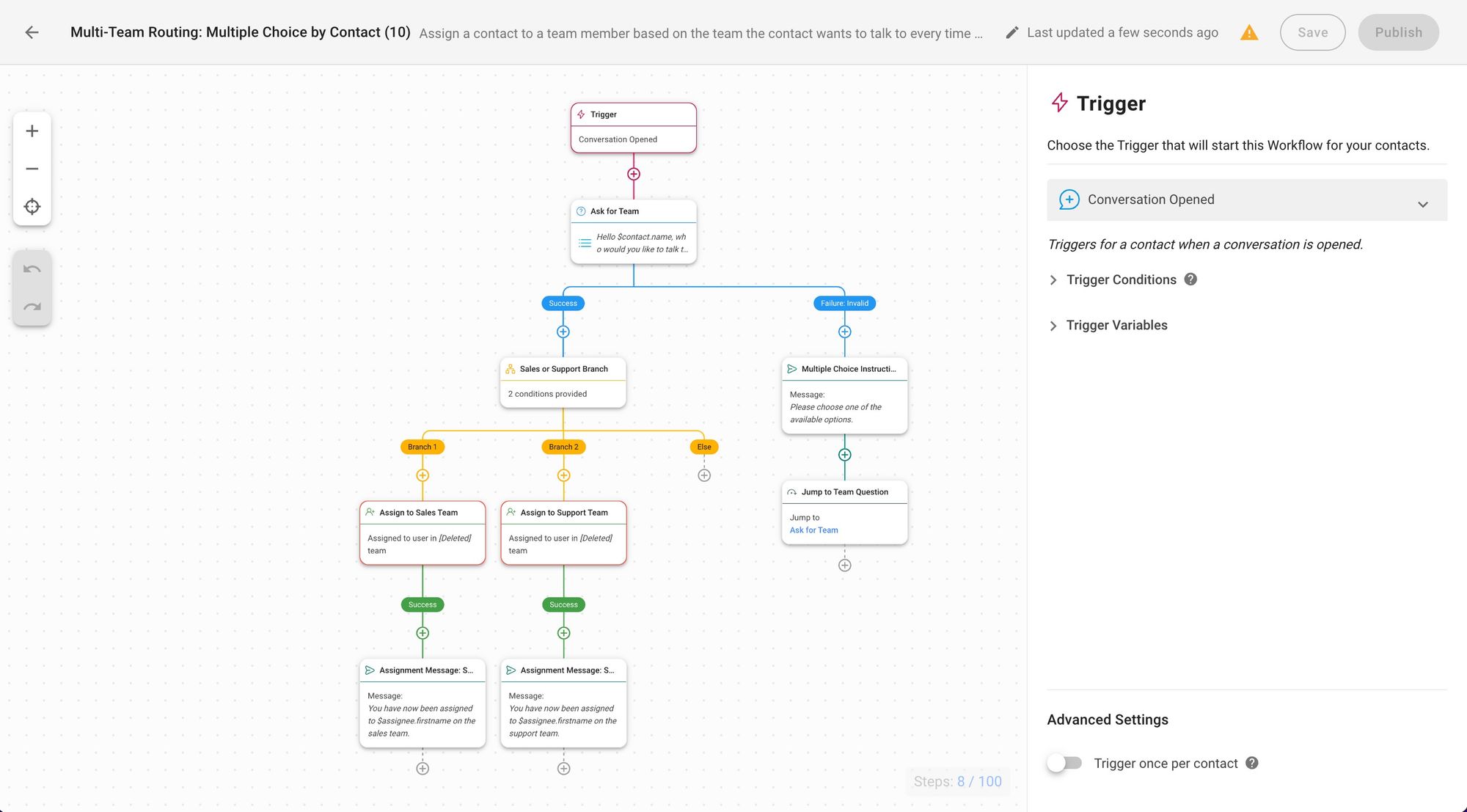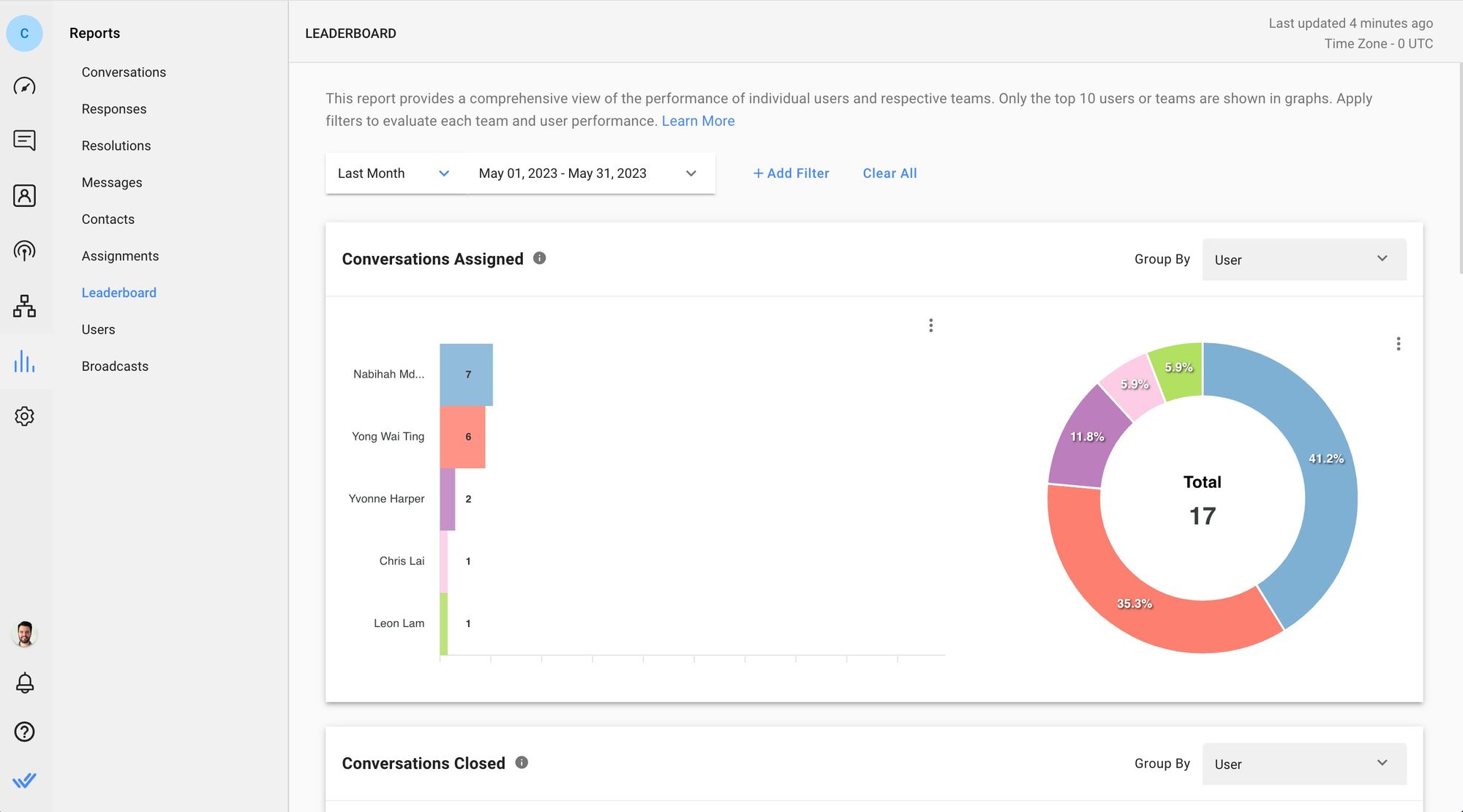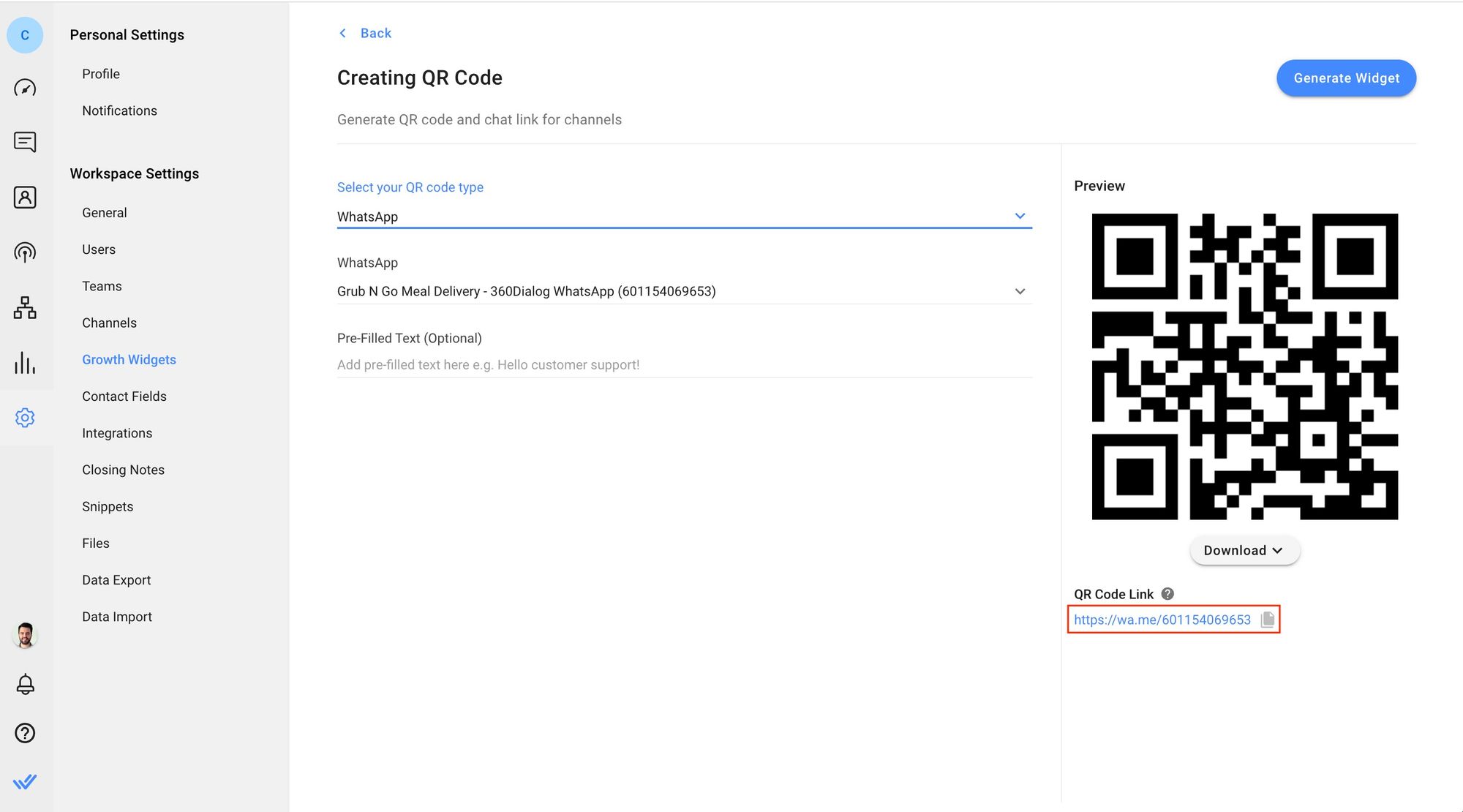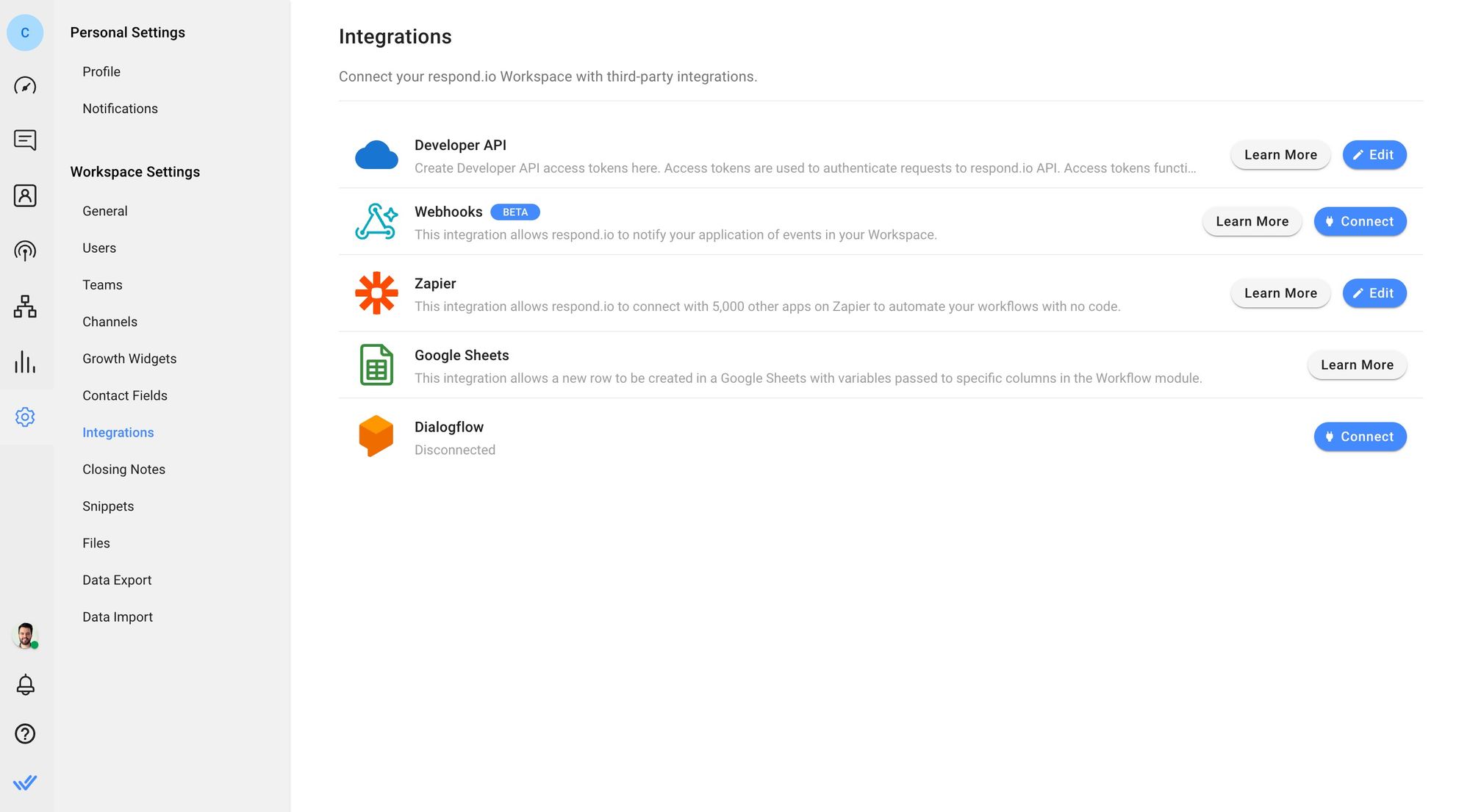En los últimos años, el concepto de comercio de los medios de comunicación social ha surgido como una fuerza poderosa. Combinando la influencia y el alcance de las plataformas de redes sociales con la conveniencia de las compras en línea, está revolucionando la forma en que las empresas se relacionan con sus clientes y venden productos o servicios. En este artículo hablaremos de sus beneficios y de cómo difiere del comercio electrónico convencional. También mostraremos los negocios que han incorporado plataformas de comercio social y discutimos lo que hace de respond.io una plataforma de comercio social competitiva.
¿Qué es el comercio social?
El comercio social se refiere a la integración de las redes sociales y las compras en línea. Aproveche la vasta base de usuarios y el potencial de participación de las plataformas de medios de comunicación social para facilitar la compra y venta de productos o servicios directamente dentro del entorno de los medios de comunicación social.
En lugar de redirigir a los usuarios a sitios web de comercio electrónico externo, las plataformas de comercio social ofrecen experiencias de compra sin problemas, permitiendo a los consumidores explorar, comparar, comprar y compartir sus compras sin abandonar la plataforma de medios sociales.
Este término no debería ser un error para e-commerce. En la siguiente sección, discutiremos las diferencias entre ambos términos.
Comercio social vs comercio electrónico
El comercio electrónico tradicional a menudo implica múltiples pasos, desde descubrir un producto hasta navegar a través de varias páginas antes de completar una compra.
A diferencia del comercio electrónico convencional, que se basa principalmente en tiendas en línea dedicadas o mercados, el comercio social integra la funcionalidad de compras directamente en plataformas de redes sociales.
Esta integración desdibuja las líneas entre la interacción social y las transacciones comerciales. Al eliminar la necesidad de que los usuarios naveguen a sitios web externos, el proceso de compra se vuelve más rápido y conveniente.
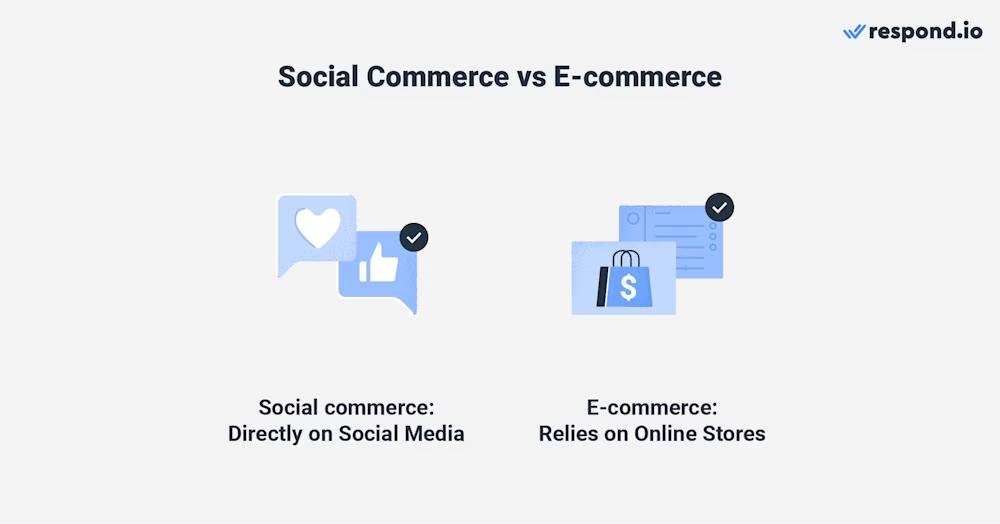
Algunas plataformas populares de comercio social incluyen WhatsApp, Facebook Messenger, WeChat, LINE, y Instagram. Estas plataformas han reconocido el potencial de monetizar su amplia base de usuarios ofreciendo experiencias de compra integradas.
Por ejemplo, la función Instagrama's Shop permite a las empresas mostrar y vender productos directamente dentro de la aplicación, mientras que los miniprogramas de WeChat's permiten a los usuarios navegar y comprar artículos sin salir de la plataforma de mensajería.
En los últimos tiempos, los canales de mensajería también han entrado en la tendencia de la cartera electrónica, cortando la brecha entre las plataformas de redes sociales y las tiendas en línea aún más. Algunos ejemplos son Facebook Pay y WhatsApp Pay de Meta.
Con esto en mente, profundicemos en las razones por las que adoptar una estrategia de comercio social se ha vuelto cada vez más beneficioso tanto para las empresas como para los consumidores.
Beneficios del comercio social
Estas son tres razones por las que las empresas lo utilizan para elevar su presencia en línea y impulsar más ventas:
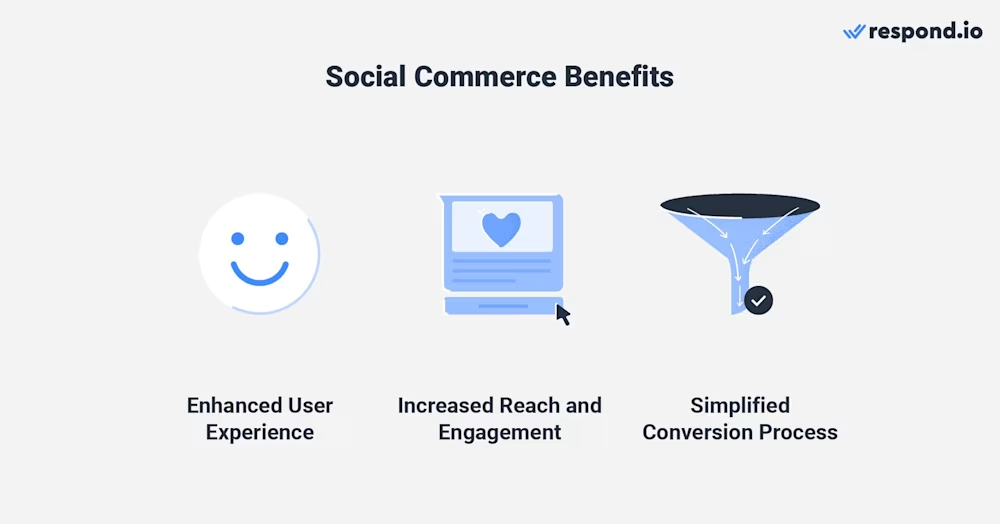
Mejorada experiencia de usuario: El comercio social proporciona una experiencia de compra perfecta y personalizada dentro del familiar entorno de las redes sociales. Los usuarios pueden descubrir productos a través de recomendaciones, reseñas e influencias en las que confían, creando un sentido de autenticidad y fomentando el compromiso.
Mayor alcance y participación: Las empresas pueden aprovechar la enorme base de usuarios y los altos niveles de participación de las plataformas de redes sociales. El comercio social permite una mayor visibilidad, ya que los usuarios pueden compartir fácilmente productos o recomendarlos a sus redes, amplificando la exposición a la marca y generando crecimiento orgánico.
Proceso de conversión simplificado: El comercio social agiliza el proceso de compra, reduciendo la fricción y aumentando la probabilidad de conversión al permitir que los usuarios realicen compras directamente dentro de la plataforma de redes sociales.
Habiendo explorado los beneficios, dejar que's desplace nuestro foco para examinar casos prácticos en los que las empresas han apalancado este enfoque para impulsar su presencia en línea y aumentar las ventas.
Transforma las conversaciones de los clientes en crecimiento empresarial con respond.io. ✨
¡Gestiona llamadas, chats y correos electrónicos en un solo lugar!
Ejemplos de estrategias de comercio social
Mientras que cada vez son más las empresas que poco a poco están abrazando esta tendencia, hemos seleccionado dos casos específicos para mostrar el impacto transformativo que puede tener en el crecimiento y éxito empresarial.
Social Commerce Instagram: How Glossier Does It
Glossier es una compañía de cosméticos y skincare que ha ganado una gran popularidad en sus plataformas de comercio social, involucrando a clientes y conduciendo ventas.
La estrategia de Glossier gira en torno a crear una comunidad sólida en línea y producir contenido generado por los usuarios. Ha construido un seguimiento muy comprometido en plataformas como Instagram, donde exhibe productos y anima a los clientes a compartir sus propias experiencias y fotos usando hashtags de la marca.

Además, Glossier utiliza plataformas de comercio social como canal de venta directo. Cuenta con una experiencia de compra perfecta integrada en sus cuentas de redes sociales, permitiendo a los usuarios navegar y comprar productos sin salir de la plataforma.
Glossier también implementa estrategias de marketing de influenciadores, colaborando con influencias de belleza populares para promocionar sus productos y llegar a un público más amplio.
Social Commerce Instagram: How Fashion Nova Does it
La estrategia de Fashion Nova se centra en el marketing de influenciadores y el contenido generado por los usuarios. Colabora con una amplia gama de celebridades, blogueros de moda e influenciadores de las redes sociales que promueven sus productos en plataformas como Instagram.
Estas celebridades a menudo comparten fotos y videos de sí mismas usando atuendos de Fashion Nova, creando un deseo entre sus seguidores de comprar los mismos artículos. Lo más importante es que Fashion Nova implementa campañas publicitarias y de reorientación de las redes sociales para llegar a su público objetivo.
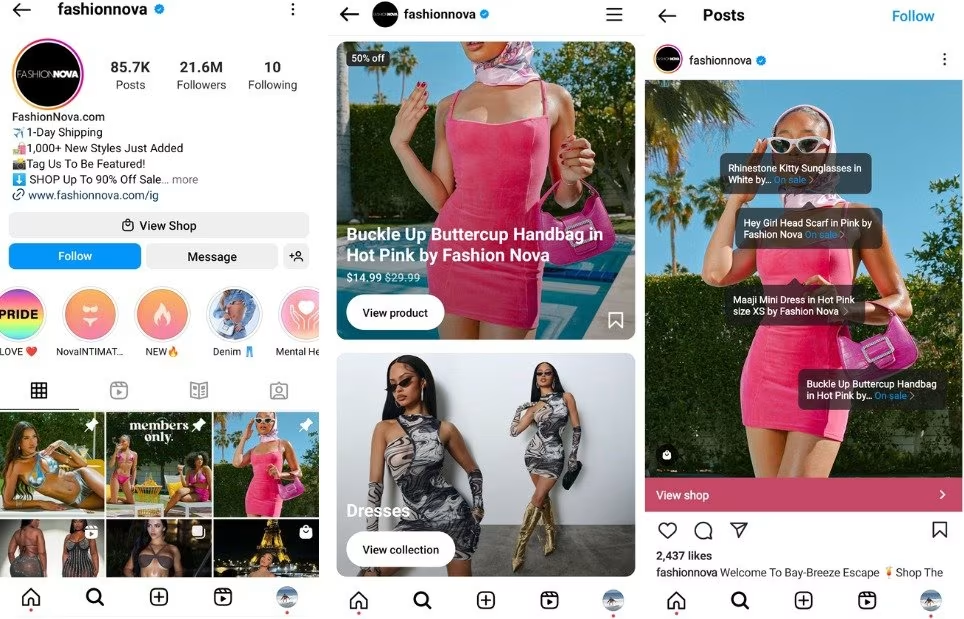
También utiliza plataformas de comercio social como Facebook, Instagram y Snapchat para dirigirse a los usuarios que han mostrado un interés en la moda y temas relacionados. Al mostrar anuncios personalizados y redirigir a los usuarios que se han comprometido con su marca, Fashion Nova maximiza sus posibilidades de convertir a los usuarios de las redes sociales en clientes.
Si has encontrado estas historias de éxito inspiradoras, sigue leyendo. Compartiremos cómo puede utilizar respond.io para implementar una estrategia de comercio social para su propio negocio y lograr resultados similares.
Por qué usar Respond.io como plataforma de comercio social
Al integrar sus canales de mensajería con respond.io, transformará su experiencia de comunicación con sus clientes. Aquí están algunas buenas prácticas para optimizar su estrategia con respond.io.
Una única bandeja de entrada para todas las plataformas de comercio social
Respond.io soporta canales populares como WhatsApp, Facebook Messenger, WeChat, LINE e Instagram, todos en un solo lugar. Las empresas pueden responder a consultas de clientes desde diferentes canales de mensajería de una bandeja de entrada omnichannel.
La conveniencia de administrar múltiples canales en un solo lugar simplifica la comunicación con el cliente y ahorra tiempo. Pero cuando se adopta un enfoque omnichannel es común terminar con conversaciones silenciadas a través de múltiples canales.
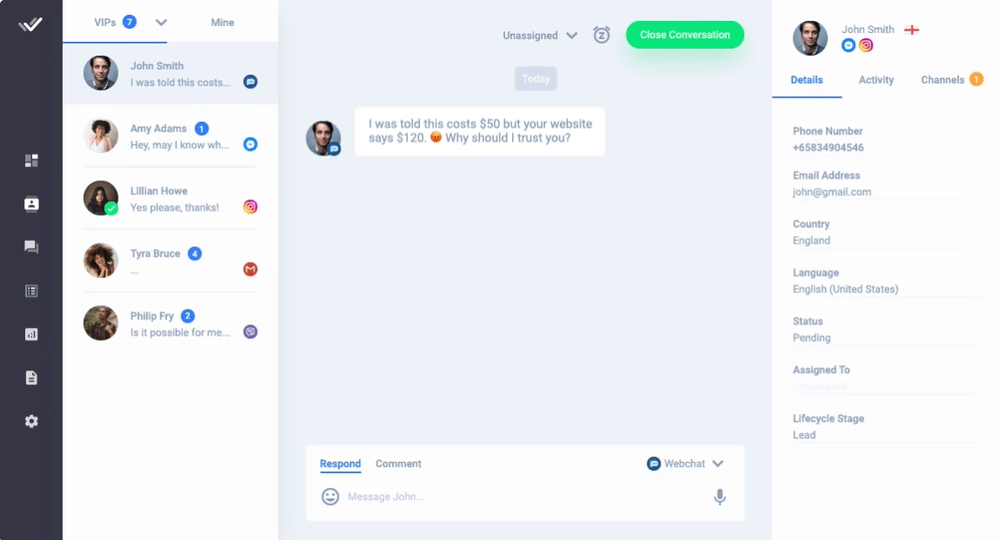
La función de Combinación de Contactos Respond.io's proporciona a las empresas una visión holística del cliente consolidando las conversaciones de los clientes en un solo perfil.
Esta visión unificada permite a las empresas entender las preferencias de los clientes, la historia y el comportamiento, garantizando una experiencia personalizada y consistente durante todo el viaje al cliente.
Automatización avanzada con flujos de trabajo
El Módulo de Flujos de Trabajo es el constructor de automatización de respond.io, diseñado para optimizar las tareas de la empresa con poca o ninguna entrada del agente. Las empresas que realizan comercio social pueden utilizar el flujo de trabajo para automatizar muchos de sus procesos.
Para crear la mejor primera impresión, crea un mensaje de bienvenida de flujo de trabajo para saludar a nuevos clientes que comienzan una conversación contigo. Para gestionar las expectativas de tiempos de respuesta cuando no hay agentes disponibles, puede construir un flujo de trabajo de un mensaje de distancia.
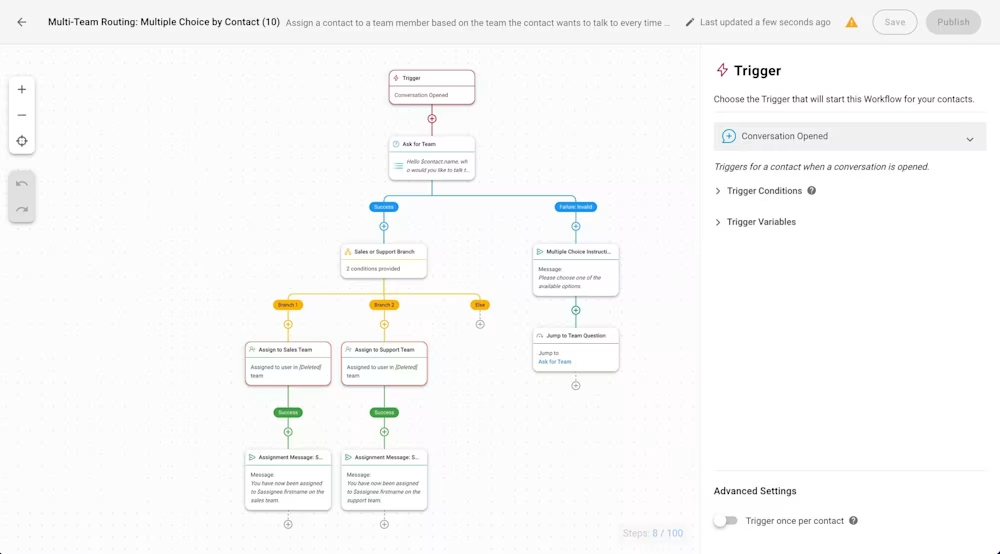
Cuando se hace manualmente, la ruta de conversación y la asignación de agentes toman un valioso tiempo de agente y no siempre son coherentes. En su lugar, intente construir un flujo de trabajo para enrutar las conversaciones a sus equipos orientados al cliente usando su lógica de enrutamiento preferida.
En una nota similar, crea tu propia lógica de asignación automática para distribuir conversaciones entrantes entre equipos con eficiencia.
Algunas empresas basadas en consultas o servicios se benefician de la recopilación de información del cliente antes de la conversación. Para estos casos, las empresas pueden fácilmente crear encuestas de pre-chat con el Hacer una Pregunta Paso de flujo de trabajo.
Monitoreo del rendimiento del agente con Análisis Avanzado
El Módulo de Informes de Respond.io permite a las empresas monitorear el desempeño de los agentes' a través de análisis avanzados. Las empresas pueden utilizarlo para rastrear los tiempos de respuesta, los tiempos de resolución y otros indicadores clave de rendimiento.
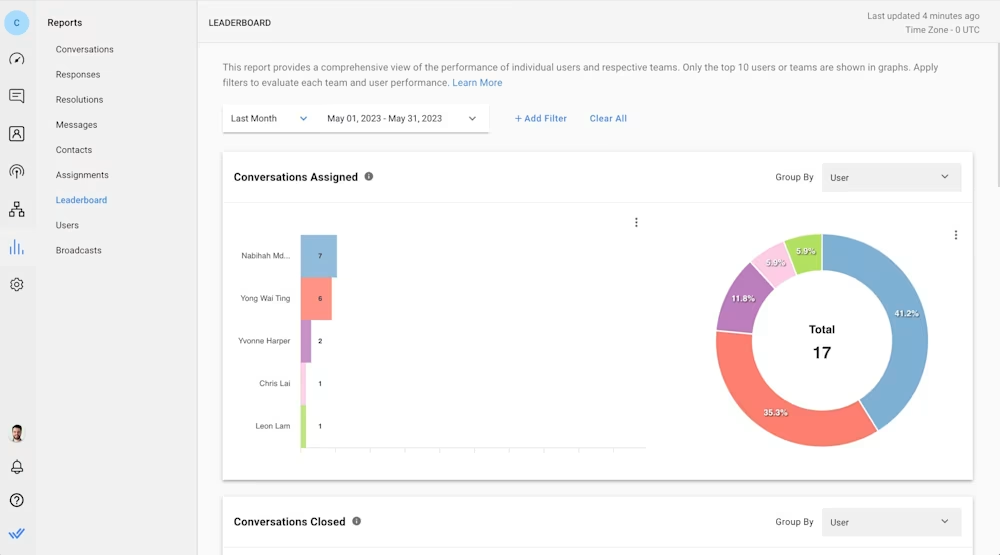
Lo más importante es que la pestaña Contactos en el Módulo de Informes muestra varias marcadores con una interfaz amigable para el usuario. Con la ayuda de los filtros, puedes obtener información granular sobre los equipos y usuarios de tu empresa.
Generación de enlaces para Redirección sin costuras
Respond.io permite a las empresas generar enlaces para diferentes canales de mensajería empresarial como Instagram DM, WhatsApp o Facebook Messenger. Una vez creados, estos enlaces pueden ser compartidos a través de plataformas de redes sociales.
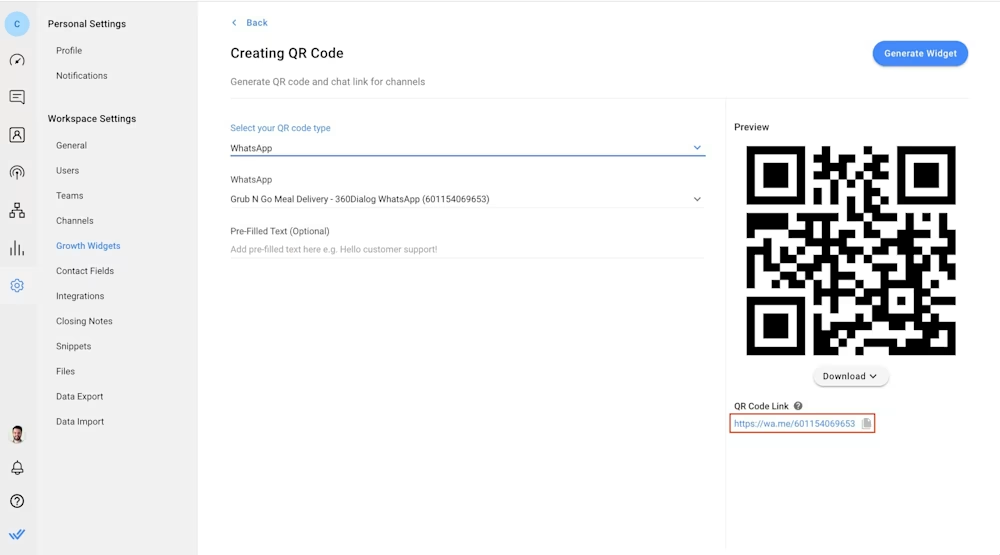
Aprovechando la generación de vínculos, las empresas pueden generar conversaciones e incrementar las conversiones de sus redes sociales sin esfuerzo.
Integración con plataformas externas
Respond.io ofrece integraciones nativas con Zapier y Make. om — el software más popular para integraciones de aplicaciones, permitiendo que las empresas se integren con una gran cantidad de plataformas de comercio electrónico y CRMs.
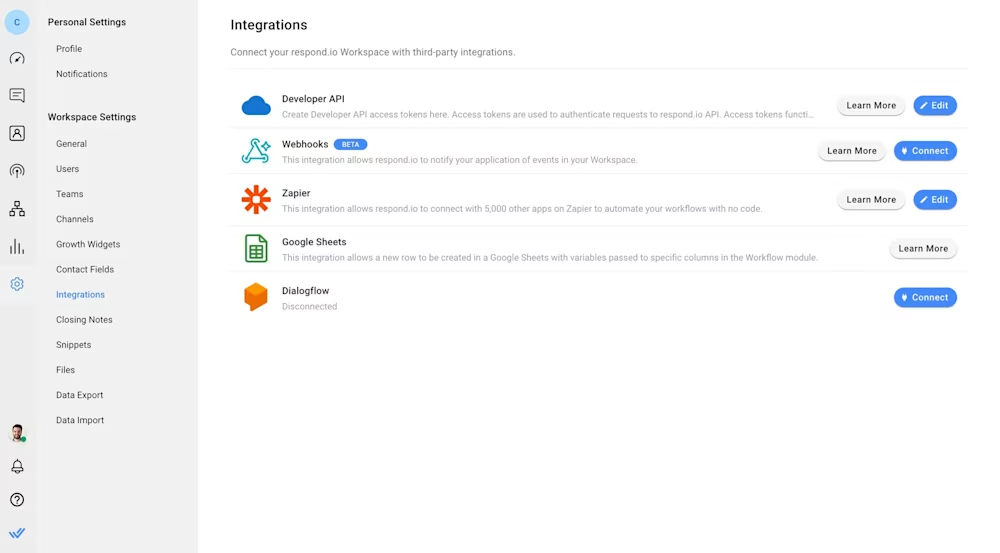
Esta capacidad de integración permite a las empresas compartir perfectamente los datos entre respond.io y otras plataformas, garantizando un flujo de información fluido, operaciones agilizadas y experiencias cohesivas de los clientes.
En conclusión, el comercio social ha surgido como un cambio de juego en el mundo de los negocios, permitiendo a las empresas conectarse con los clientes, impulsar conversiones y fomentar la lealtad a la marca como nunca antes.
Con respond.io, puedes desbloquear todo el potencial de esta innovadora tendencia y revolucionar la comunicación con tus clientes. ¿Listo para empezar? Regístrate para una prueba gratuitay testigo de respond.io se beneficia de primera mano.
Transforma las conversaciones de los clientes en crecimiento empresarial con respond.io. ✨
¡Gestiona llamadas, chats y correos electrónicos en un solo lugar!
Lecturas adicionales.
¿Quieres saber más acerca de la mensajería empresarial? Aquí tienes algunas lecturas que pueden interesarte.




































 Descripción general
Descripción general Electrónico
Electrónico Moda y vestimenta
Moda y vestimenta Muebles
Muebles Joyería
Joyería
 Actividades extracurriculares
Actividades extracurriculares Deportes y fitness
Deportes y fitness
 Centro de belleza
Centro de belleza Clínica dental
Clínica dental Clínica médica
Clínica médica
 Servicios de limpieza y servicio de camareras
Servicios de limpieza y servicio de camareras Fotografía y videografía
Fotografía y videografía
 Minorista de piezas de automóvil
Minorista de piezas de automóvil Concesionario de automóviles
Concesionario de automóviles
 Agencia de viajes y operador turístico
Agencia de viajes y operador turístico

![Plataforma de Comercio Social: Guía para Empresas [Julio 2023]](https://assets2-proxy.respond.io/ph8r57dk1q9w/23iGgifgAFpzi6h4KBFpXR/a0ca10d4cadb94b20dab825d0ba2283e/concepts-what-is-social-commerce-cover_8df8a7e316c2d4ef75455e02a9c7db50.png?q=70&fm=avif)
